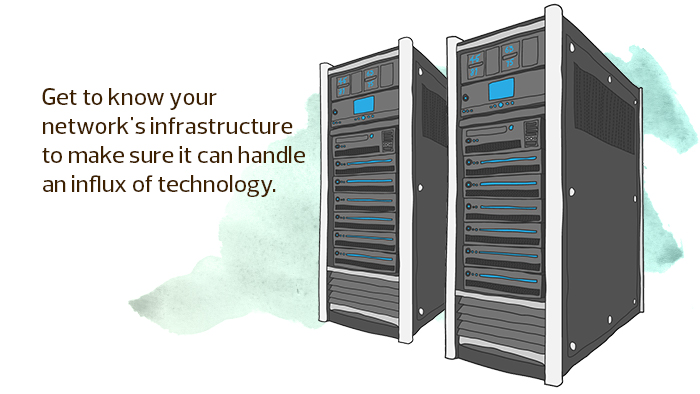4 Ways to Get Your School Future-Ready
The future of education — like most of today’s world — is deeply infused with technology. In EdTech: Focus on K–12’s latest webinar, “Is Your Network Ready for 1:1 and BYOD?,” three experts discussed how infrastructure changes, such as increasing network access points, can pave the way for innovations in the classroom.
Mike Patterson, a K–12 education strategist for CDW•G who works with schools in 15 states, offered his advice for making sure schools (and their students) are future-ready.

1. Pilot New Technology to Address IT and Classroom Concerns
The easiest part of adding new technology to a K–12 classroom is securing the tech itself. To be truly successful in the digital era, Patterson says schools must look at the impact of tech on the IT infrastructure of the school and on the day-to-day experience of teachers and students.
When planning a new tech program, Patterson says schools should consider the following:
-
Leadership: Patterson says school administrators need to define what the goals and priorities of the new technology are and determine how to communicate these to IT, teachers and students.
-
Pedagogy: “Reimagine the curriculum and how the technology will become a part of it — not to change it, but to complement what teachers are already doing,” says Patterson. Schools should offer training for new technology so teachers know how to work it into their curriculum.
-
IT: As Chris Budzynski, IT director for Huntley Community School District 158, suggests in the webinar, schools must get to know their surroundings and their networks to understand what’s needed for a successful new program. Patterson agrees, suggesting that new devices be piloted from an IT perspective and a classroom perspective so a deployment plan that considers both areas can be developed.
2. Remove Silos from Educational Planning
Patterson encourages unique departments to work together to bridge the gap that exists between curriculum and IT decisions.
“If you are not having collaborative conversations between your teachers and IT department, you are selling yourself short of a truly successful tech initiative,” he says.
In the future, Patterson says, departments will no longer be successful independent of each other, and everything should be considered a learning initiative.

3. Create a Real-World Tech Environment
One way to make sure students are ready for the future is to create a learning environment that reflects the real world, Patterson says.
“We need to meet our students where they are, which is in a world of connectivity with anywhere, anytime access,” he says.
Districts should work to build an infrastructure and curriculum to meet students’ needs so that they don’t have to “turn off” when they get to school.
One suggestion Patterson makes for improving access is to step back from a one-size-fits-all approach and consider combining a one-to-one program with a bring-your-own-device program to make access ubiquitous.
This also will mimic what students encounter in their future education and career experiences, Patterson says, where not everyone has the same device.
4. Make Sure Tech Deployment Is Sustainable
When deploying one-to-one technology, EdTech reports, schools need to factor in growth that happens over time and make sure their network is ready to scale for that growth.
Patterson agrees, saying that programs need to consider the full cost of rolling out new technology, not just the initial purchase: “Conversations you are having now cannot only impact the now, but are also a part of the future.”
Interested in learning more? Register to watch a recording of EdTech’s latest webinar, with more advice from these experts.









